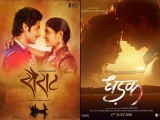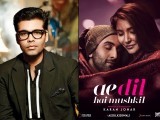
If Saif Ali Khan’s ‘apology’ to Kangana Ranaut was not bad enough, the man has gone ahead and penned an open letter on nepotism now, and oh boy, what a treat it is! First, a bit of background – Karan Johar, Varun Dhawan and Saif Ali Khan, the three privileged elites of that ‘big family’ called Bollywood who have made it bigger in the industry by virtue of having influential insiders for parents, took on a lone self-made woman who called out the ‘big daddy’ of nepotism in the film industry. Thankfully, their “nepotism rocks” joke managed to blow up in their faces because people on social media went berserk on all three. https://www.youtube.com/watch?v=UkmtHP9BLfk Eventually, the trio tried their best apologising, or at least sounded so. When I say ‘tried their best’, I am being kind. Dhawan apologised to ‘anyone’, Johar’s was less of an apology and more of a rambling by a nepotism apologist. The best, however, was from Khan. Not only did he fail to apologise at any point, he also went on a tirade about how he too is a victim of nepotism and something about ‘genetics’ and ‘eugenics’. Once again, people did not let it go and he was ridiculed some more. Khan, sadly, did not stop there. To prove that he is a cultured man and an ‘intellectual’, he penned an open letter to “whoever it may concern”, to elaborate his views about nepotism and eugenics. That open letter, however, is likely to give you a headache worse than a migraine when you are hungover on a Monday morning. He says,
“I apologised to Ranaut, so I do not owe anybody else an explanation,” and then proceeds to give a long winded explanation.On the matter of eugenics, Khan writes,
“Three reporters from the websites Bollywood Life, The Quint and Elle India, made a point of saying that all I did was use big words like eugenics and genetics. I think it is extremely relevant in a conversation on nepotism, which means family favouritism, to talk about genetics and eugenics. Eugenics means well born and in a movie context, the genes (the DNA we are born with, not the blue trousers we wear) of, let’s say Dharmendra’s son or Amitabh Bachchan’s son or for that matter, Sharmila Tagore’s son come into play. Because people are interested in what their children will be like and whether they will have the genes of their parents, in terms of their talent. If you need another example, then take race horses. We take a derby winner, mate him with the right mate and see if we can create another grand national winner. So, in that sense, this is the relationship between genetics and star kids. Hope that is clear?”Nope, it is not. First of all, for those who do not know, eugenics is the science of improving a population by controlled breeding to increase the occurrence of desirable heritable characteristics something Hitler once tried to do, if you remember. Secondly, did he just compare people to racehorses? Also, is he implying that only people born in Bollywood homes are ‘good horses’? Even if we ignore the glaring gaps in Khan’s knowledge of biology, anthropology and history, you cannot ignore his condescension. Moreover, he asks a journalist who seems to have a better grasp on the meaning of the word ‘eugenics’ than him, to get her ‘head out of the hemline of the actress of the month and read a book’.
“As for the girl from Elle,” he says, “I’m sorry you found words like eugenics in a conversation about nepotism misplaced. Perhaps if you got your head out of the hemline of the actress of the month and read a book, your vocabulary might improve.”Furthermore, he refers to a grownup woman as ‘girl’. Way to infantilise your critics, sexist uncle ji! Moving on, he further states,
“Nepotism is probably least prevalent in the movie industry and rampant in politics and business. Nepotism in dynastic politics is a well-known and unspoken truth. It’s the same in business. But nobody talks about that. Nepotism is Donald Trump putting his daughter in the White House rather than someone who is better qualified. Actors are the soft targets.”There are so many things that are wrong here, it is hard to decide where to begin from. On what basis does the son of a famous actress and a famous cricketer (who was a former nawab), have the audacity to say “nepotism is probably least prevalent in the movie industry”? He also says that nepotism is rampant in politics and business. I wonder if in his la la land imagination, Khan thinks that the film industry is not a business. Perhaps he thinks it’s a non-profit organisation. He also seems to think that nobody talks about the nepotism prevalent in politics. If actors are soft targets for nepotism, then Rahul Gandhi must be an actor. And if he really thinks the media does not talk about nepotism in politics, especially about Trump and his daughter Ivanka, then he needs to stop watching his own movies and start watching the news. [caption id="" align="alignnone" width="600"]
 Photo: Screenshot[/caption]
He then says,
Photo: Screenshot[/caption]
He then says,
“What’s at play here are three systems. Aristocracy, the rule of the best, which is what this industry is. Ruled by the best. Also, meritocracy. It is ruled by the people with the most talent and it’s also ultimately tempered by democracy, which is people power. Nepotism cannot work in the film industry because it is a democracy. The film industry is the fairest line of work. So yes, maybe I got a chance because of my mother, but that is more genetics than nepotism. It’s a genetic investment that the producer was making.”A man who was born in a royal family does not know what aristocracy means. Oh Lord. Aristocracy is “the highest class in certain societies, typically comprising people of noble birth holding hereditary titles and offices” that sounds awful like Johar. Also, the man really needs to stop using the word ‘genetics’. It does not make him sound smart. Finally, he writes,
“Johnny Depp once told Kate Moss – I had forgotten his advice and I am never going to forget it again – never complain and never explain. That’s good advice, I think,” (after whining on and on in more than a thousand words.).The last thing anyone needs is Khan’s advice. Though there is one for him – shut up, please! This post originally appeared here.



 Most celebrities in the film, such as Riteish Deshmukh and
Most celebrities in the film, such as Riteish Deshmukh and 
 The entire plot revolves around the award show, and while the writers try to bank on celebrity appearances and humour, the film itself has no substance to engage the viewers for long.
Sonakshi Sinha is almost unbearable on screen and fails to do justice to the character of a Gujarati girl. Diljith Dosanjh, on the other hand, is a good actor and manages to give his best, but there is only so much a good actor can do with a poor script. However, if the film has any saving grace at all, it is undoubtedly Dosanjh.
The entire plot revolves around the award show, and while the writers try to bank on celebrity appearances and humour, the film itself has no substance to engage the viewers for long.
Sonakshi Sinha is almost unbearable on screen and fails to do justice to the character of a Gujarati girl. Diljith Dosanjh, on the other hand, is a good actor and manages to give his best, but there is only so much a good actor can do with a poor script. However, if the film has any saving grace at all, it is undoubtedly Dosanjh.
 As usual, Boman Irani needs to polish up and start doing different (read: sensible) characters for a change. Lara Dutta, conversely, reminds us that we’d like to see more of her on the big screen on a regular basis, yet her character is poorly written and does not do her justice. Giving credit where it is due, there is a scene where Dutta and Irani share a pizza, and it is an incredible performance from both actors.
As usual, Boman Irani needs to polish up and start doing different (read: sensible) characters for a change. Lara Dutta, conversely, reminds us that we’d like to see more of her on the big screen on a regular basis, yet her character is poorly written and does not do her justice. Giving credit where it is due, there is a scene where Dutta and Irani share a pizza, and it is an incredible performance from both actors.
 Karan Johar appears as himself through and through, the way he does in any reality show – a brand and self-obsessed director who tries to venture into acting every chance he gets even though he cannot act.
On the other hand, it is unsurprising to see Riteish Deshmukh in the film, as he manages to be cast in almost every film by Jackie Bhagnani’s production house. After proving his talent with films like Ek Villain and the
Karan Johar appears as himself through and through, the way he does in any reality show – a brand and self-obsessed director who tries to venture into acting every chance he gets even though he cannot act.
On the other hand, it is unsurprising to see Riteish Deshmukh in the film, as he manages to be cast in almost every film by Jackie Bhagnani’s production house. After proving his talent with films like Ek Villain and the 
 For a movie relying on its humour, most of the jokes in Welcome to New York are lame and simply unfunny. The movie tries to create a joke with a track from Karan Arjun, yet it feels too forced and inorganic. Even the soundtrack of the movie, which is centred on entertainment, fails to entertain, with Rahat Fateh Ali Khan’s song coming close but ultimately failing due to its less than praise-worthy lyrics.
On the whole, Welcome To New York seems less like a Bollywood film and more like an extended PR campaign for the next IIFA Awards. A few scenes have their charms, but unfortunately, they are not enough to make the entire film bearable. The film is strongly reminiscent of
For a movie relying on its humour, most of the jokes in Welcome to New York are lame and simply unfunny. The movie tries to create a joke with a track from Karan Arjun, yet it feels too forced and inorganic. Even the soundtrack of the movie, which is centred on entertainment, fails to entertain, with Rahat Fateh Ali Khan’s song coming close but ultimately failing due to its less than praise-worthy lyrics.
On the whole, Welcome To New York seems less like a Bollywood film and more like an extended PR campaign for the next IIFA Awards. A few scenes have their charms, but unfortunately, they are not enough to make the entire film bearable. The film is strongly reminiscent of  All photos: Screenshots
All photos: Screenshots


 The film starts on a comic note and is mostly about fun, tricks and games, until it takes a serious turn when Aakruti, a girl Simmba treats like a sister, gets raped and killed. The latter half of the film emerges as a revenge drama where the focus is on getting justice for the victim, revenge from the fallen, and good triumphing over the forces of evil.
The film starts on a comic note and is mostly about fun, tricks and games, until it takes a serious turn when Aakruti, a girl Simmba treats like a sister, gets raped and killed. The latter half of the film emerges as a revenge drama where the focus is on getting justice for the victim, revenge from the fallen, and good triumphing over the forces of evil.


 Khan plays Simmba’s love interest in the film, and looks radiant and beautiful in her brief role. Ironically, her character is marginalised in a film that capitalises on a social issue concerning women, where
Khan plays Simmba’s love interest in the film, and looks radiant and beautiful in her brief role. Ironically, her character is marginalised in a film that capitalises on a social issue concerning women, where  Sood, on the other hand, is top notch as a local don in a negative avatar. He delivers a compelling performance and stands tall as the perfect antagonist, despite Singh’s strong presence. Ashutosh Rana and Siddharth Jadhav also deserve a special mention for playing their roles with incredible integrity.
Sood, on the other hand, is top notch as a local don in a negative avatar. He delivers a compelling performance and stands tall as the perfect antagonist, despite Singh’s strong presence. Ashutosh Rana and Siddharth Jadhav also deserve a special mention for playing their roles with incredible integrity.
 An out-and-out action-packed flick, Simmba portrays a larger than life world with Shetty’s tried and tested age-old masala-coated formula as the foundation. The colourful visuals, lavish sets, high octane action sequences, wide shots and the sheer size of the film alone is enough to captivate cinemagoers.
The cinematography is thrilling, as are the whistle-worthy dialogues by Farhad Samji and Sajid Samji that make the first half of the film in particular a hilarious riot. The at-times melodramatic background score keeps up with the pace of the action, while the catchy and popular songs, in particular the dance-inducing Aankh Marey, keep the audience hooked.
https://www.youtube.com/watch?v=_KhQT-LGb-4
The film belongs to the rape and revenge genre, and yet the required nuance and sensitivity is clearly missing. It is evident that the rape of a woman and the overall concept of honour are used as a mere catalyst for a possible moral flip of the protagonist, rather than as a proper theme to actually advance the plot forward and address the issue, given its particular
An out-and-out action-packed flick, Simmba portrays a larger than life world with Shetty’s tried and tested age-old masala-coated formula as the foundation. The colourful visuals, lavish sets, high octane action sequences, wide shots and the sheer size of the film alone is enough to captivate cinemagoers.
The cinematography is thrilling, as are the whistle-worthy dialogues by Farhad Samji and Sajid Samji that make the first half of the film in particular a hilarious riot. The at-times melodramatic background score keeps up with the pace of the action, while the catchy and popular songs, in particular the dance-inducing Aankh Marey, keep the audience hooked.
https://www.youtube.com/watch?v=_KhQT-LGb-4
The film belongs to the rape and revenge genre, and yet the required nuance and sensitivity is clearly missing. It is evident that the rape of a woman and the overall concept of honour are used as a mere catalyst for a possible moral flip of the protagonist, rather than as a proper theme to actually advance the plot forward and address the issue, given its particular  The predictability of the film can be sensed throughout, as the narrative is not unexpected and there is hardly any room for suspense or surprise. It does not have anything unique or crisp, as the plot is a recycled version of previous Bollywood and Shetty films and follows the typical done-that, seen-that template.
However, the commercial and mainstream bells and whistles, a socially-relevant subject (albeit underdeveloped and unexplored) and Singh capitulating to the image of a true blue
The predictability of the film can be sensed throughout, as the narrative is not unexpected and there is hardly any room for suspense or surprise. It does not have anything unique or crisp, as the plot is a recycled version of previous Bollywood and Shetty films and follows the typical done-that, seen-that template.
However, the commercial and mainstream bells and whistles, a socially-relevant subject (albeit underdeveloped and unexplored) and Singh capitulating to the image of a true blue  All photos: Screenshots
All photos: Screenshots



 The trailer mirrors the intertwined but tangled relationships between our cast as Roop (Bhatt) is married off to Dev Chaudhry (Kapoor). Dev, however, already has a wife, Satya (Sinha), whom he loves immensely. He even tells Roop that she can only get respect and not love out of their union. Roop soon realises she has nothing to lose and falls for Zafar (Dhawan), who is a Muslim. Besides this, Dixit plays the role of a dancer, while Dutt is shown as an enraged man who warns Zafar to stay away from Roop.
The trailer mirrors the intertwined but tangled relationships between our cast as Roop (Bhatt) is married off to Dev Chaudhry (Kapoor). Dev, however, already has a wife, Satya (Sinha), whom he loves immensely. He even tells Roop that she can only get respect and not love out of their union. Roop soon realises she has nothing to lose and falls for Zafar (Dhawan), who is a Muslim. Besides this, Dixit plays the role of a dancer, while Dutt is shown as an enraged man who warns Zafar to stay away from Roop.

 The two-minute long trailer is enough to unravel the complexity of all the characters and challenges that await them, with the main narrative being rooted deeply in a tale of a profound and unrequited love.
Further, the film heavily projects themes of extra-marital relationships, interfaith love, communal tension, honour versus stigma and love versus duty. Hence, the trailer makes it clear the film will effectively immerse viewers into its world and stun them with its enchanting visuals, grandiosity, ornate costumes, picturesque locations, incredibly choreographed dance numbers and action scenes, lilting background music, notable dialogues as well as some promising performances.
The two-minute long trailer is enough to unravel the complexity of all the characters and challenges that await them, with the main narrative being rooted deeply in a tale of a profound and unrequited love.
Further, the film heavily projects themes of extra-marital relationships, interfaith love, communal tension, honour versus stigma and love versus duty. Hence, the trailer makes it clear the film will effectively immerse viewers into its world and stun them with its enchanting visuals, grandiosity, ornate costumes, picturesque locations, incredibly choreographed dance numbers and action scenes, lilting background music, notable dialogues as well as some promising performances.

 Considering the opulence and splendour of this project, the film seems to tread into the terrain of
Considering the opulence and splendour of this project, the film seems to tread into the terrain of  This grand tale of forbidden love, wavering faithfulness and betrayal, all amid the background of communal tension and violence, emits some intense emotions. It is clear this will be a melodrama, with the audience sure to experience strong feelings not just for the characters but for the rich yet violent history of the
This grand tale of forbidden love, wavering faithfulness and betrayal, all amid the background of communal tension and violence, emits some intense emotions. It is clear this will be a melodrama, with the audience sure to experience strong feelings not just for the characters but for the rich yet violent history of the  Kalank looks amazing, and has definitely infused the right sense of curiosity, excitement and fascination in viewers. The film has all the potential to triumph at the box office and make history in the process, as it has all the trappings of a visual delight and will be remembered as an appealing entertainer if it lives up to the expectations of the audience.
Kalank releases in theatres today, April 17, 2019.
All photos: IMDb
Kalank looks amazing, and has definitely infused the right sense of curiosity, excitement and fascination in viewers. The film has all the potential to triumph at the box office and make history in the process, as it has all the trappings of a visual delight and will be remembered as an appealing entertainer if it lives up to the expectations of the audience.
Kalank releases in theatres today, April 17, 2019.
All photos: IMDb